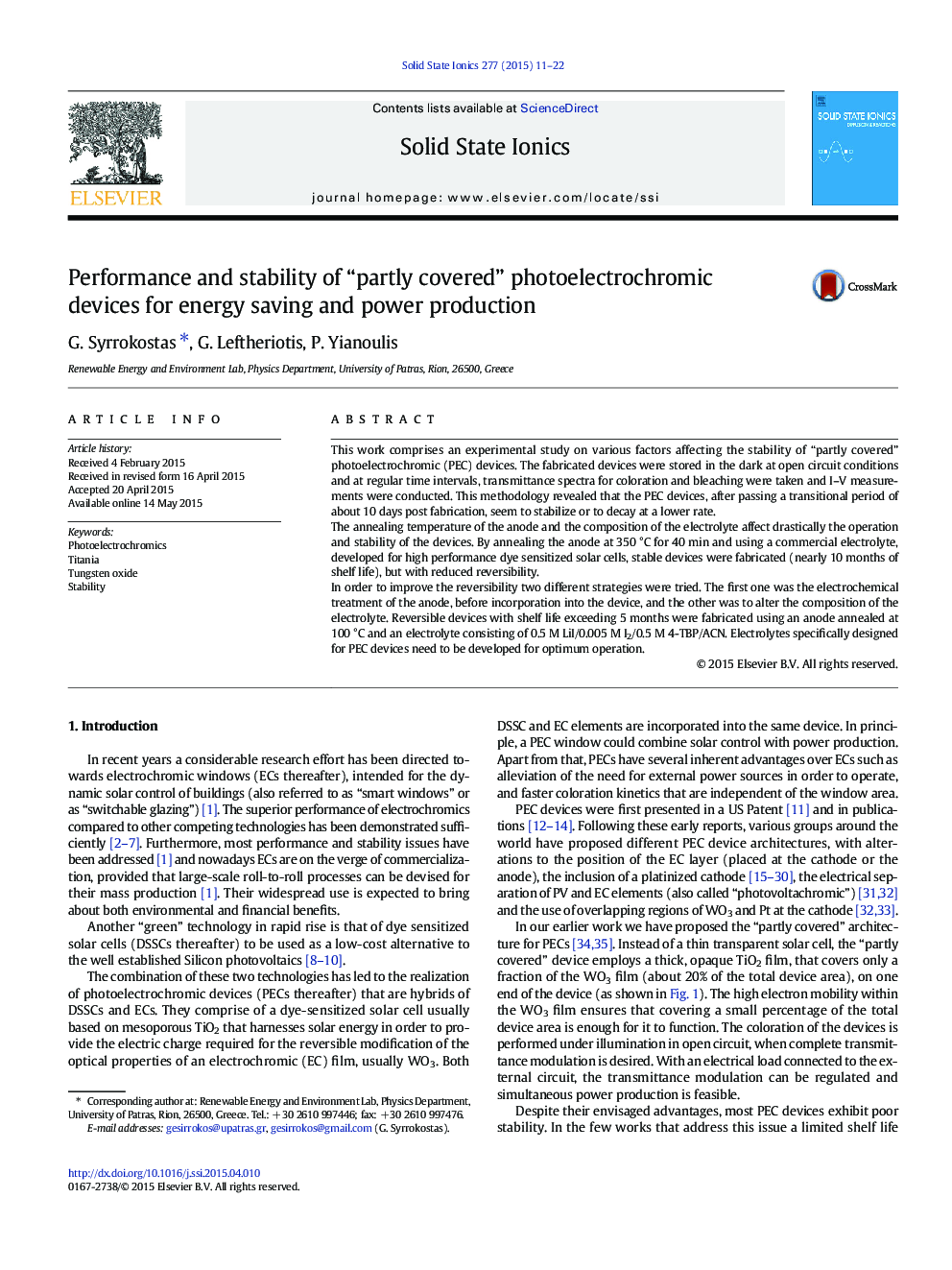| Article ID | Journal | Published Year | Pages | File Type |
|---|---|---|---|---|
| 1295295 | Solid State Ionics | 2015 | 12 Pages |
•Annealing of the K-glass/WO3/TiO2 anode affects the properties of PEC devices.•Electrochemical treatment of the WO3 films enhances the PEC device reversibility.•The electrolyte composition greatly affects PEC device performance and stability.•The most stable device fabricated so far has endured nearly 10 months of testing.
This work comprises an experimental study on various factors affecting the stability of “partly covered” photoelectrochromic (PEC) devices. The fabricated devices were stored in the dark at open circuit conditions and at regular time intervals, transmittance spectra for coloration and bleaching were taken and I–V measurements were conducted. This methodology revealed that the PEC devices, after passing a transitional period of about 10 days post fabrication, seem to stabilize or to decay at a lower rate.The annealing temperature of the anode and the composition of the electrolyte affect drastically the operation and stability of the devices. By annealing the anode at 350 °C for 40 min and using a commercial electrolyte, developed for high performance dye sensitized solar cells, stable devices were fabricated (nearly 10 months of shelf life), but with reduced reversibility.In order to improve the reversibility two different strategies were tried. The first one was the electrochemical treatment of the anode, before incorporation into the device, and the other was to alter the composition of the electrolyte. Reversible devices with shelf life exceeding 5 months were fabricated using an anode annealed at 100 °C and an electrolyte consisting of 0.5 M LiI/0.005 M I2/0.5 M 4-TBP/ACN. Electrolytes specifically designed for PEC devices need to be developed for optimum operation.
Graphical abstractFigure optionsDownload full-size imageDownload as PowerPoint slide
